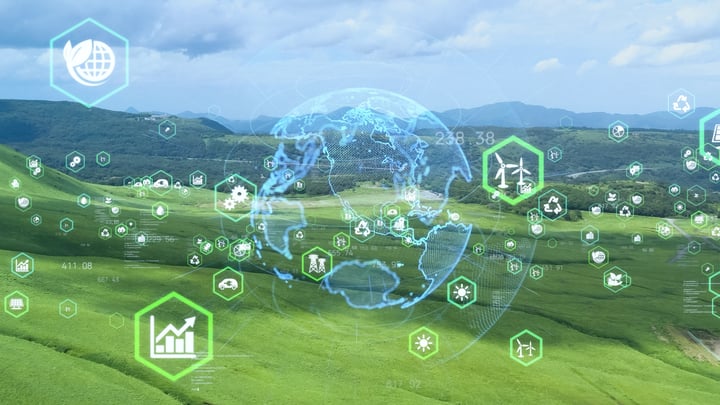Enhancing sustainability in oil & gas: Tackling methane emissions with cutting edge solutions

The oil and gas industry faces a crucial environmental challenge in pursuit of a greener and more sustainable future: reducing methane emissions. Monitoring and quantifying methane emissions from industrial operations is required to track, manage, and lower emission output. Where traditional monitoring techniques fail to provide accurate data, Kuva Systems’ groundbreaking Kuva Gas Imaging Camera utilizes infrared sensors and spectroscopic absorption to visualize methane plumes and pinpoint emission sources with unparalleled precision.
Yet, managing multiple Kuva Gas Imaging Cameras scattered across vast, often remote oil and gas facilities presented logistical complexities. Manually updating each camera onsite required significant time, leading to inefficiency and substantial costs. Moreover, when technical issues arose, the engineering team faced limited visibility into the cameras' software systems, impeding swift troubleshooting and resolution.
Overcoming remote device management challenges
Kuva Systems successfully navigated these challenges with four key elements, optimizing their operations and paving the way for a greener and more sustainable future.
1. Advanced OTA software updates
By integrating a secure and robust over-the-air (OTA) software update system, Kuva Systems streamlined its camera fleet management. Leveraging OTA updates, the team could remotely initiate software deployments, facilitating swift and efficient installation of updates across all Kuva Gas Imaging Cameras. Eliminating the time-consuming onsite visits optimized operational efficiency and minimized manual intervention in the update process.
Technical details: The OTA update system utilized the Yocto Embedded Linux device operating system and supported Azure IoT Edge for runtime applications. Integration with Azure IoT Hub allowed centralized application update management, enhancing the OTA process's overall efficiency.
2. Enhanced remote troubleshooting
Kuva Systems implemented remote device troubleshooting capabilities, providing their engineering team comprehensive insights into each camera's entire software ecosystem. Empowered with secure remote terminals, engineers gained access to the cameras' systems, inspecting access logs and remotely monitoring user activity. Remote troubleshooting enabled the swift identification and resolution of software-related issues, reducing downtime and ensuring uninterrupted methane emission monitoring.
Technical details: The embedded software engineering team utilized the remote terminal to debug and troubleshoot software across the camera's systems. The added remote access and visibility layer was crucial for effective and efficient troubleshooting.
3. Optimized edge data processing
Recognizing the significance of efficient data processing at the edge, Kuva Systems adopted delta updates as a critical component of its operations. The use of delta updates significantly reduced the size of deployments, minimizing bandwidth consumption during updates. Edge processing allowed Kuva Gas Imaging Cameras to perform critical calculations and processes directly in the field, maximizing operational efficiency while reducing cloud processing requirements.
Technical details: Leveraging delta updates, Kuva Systems efficiently updated the camera's applications, including frequent updates with machine learning (ML) algorithm enhancements. The compatibility between the Azure layer and the OTA system allowed asynchronous updates via Azure IoT Hub, further enhancing edge data processing capabilities.
4. Fail-safe design for reliability
Maintaining camera functionality in the face of potential update failures was a critical priority for Kuva Systems. Partnering with a reliable OTA software update provider leveraging a fail-safe design safeguards camera performance even if an update encounters issues. A fail-safe design reinforced the cameras' reliability and ensured continuous methane emission monitoring without interruptions.
Technical details: The fail-safe design included a rollback capability, allowing the camera to revert to the previous state if an update failed, guaranteeing uninterrupted functionality.
Read the case study
Kuva Systems' journey exemplifies how adopting best practices and innovative technologies can revolutionize remote operations. Companies can use secure OTA software updates, efficient troubleshooting, and edge data processing to optimize operations and contribute to future innovation.
Related articles
Cutting costs by 80%: Sustainable energy innovator leverages OTA updates
Sustainable devices, smart innovation: How OTA updates can contribute to cutting costs and carbon
Enhancing maritime security and connectivity: The critical role of OTA updates in fleet management
Learn why leading companies choose Mender
Discover how Mender empowers both you and your customers with secure and reliable over-the-air updates for IoT devices. Focus on your product, and benefit from specialized OTA expertise and best practices.




